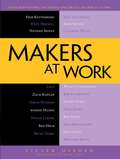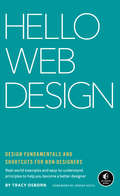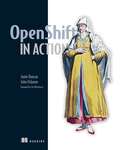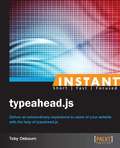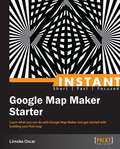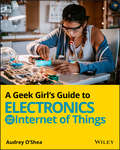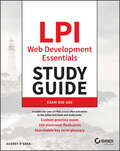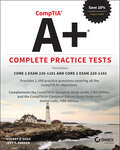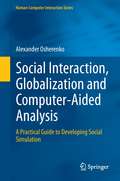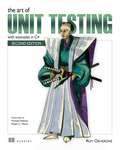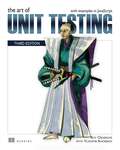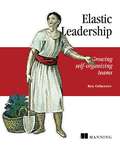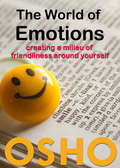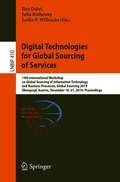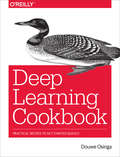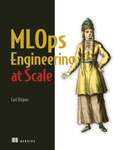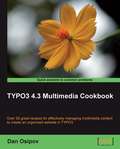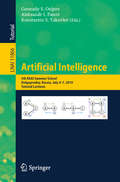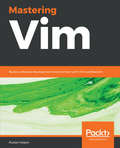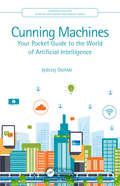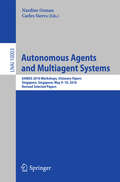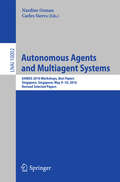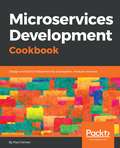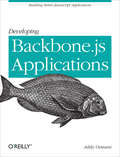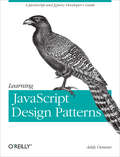- Table View
- List View
Makers at Work
by Steven OsbornWhat do you get when you combine an electronics hobbyist, hacker, garage mechanic, kitchen table inventor, tinkerer, and entrepreneur? A "maker," of course. Playful and creative, makers are--through expertise and experimentation--creating art, products, and processes that change the way we think and interact with the world. As you''ll see from the 21 interviews in Makers at Work, inquisitive makers are just as apt to pick up a laser cutter or an Arduino as a wrench to fashion something new. For example, you''ll meet Jeri Ellsworth, who might provide a video lecture on magnetic logic one day and a tutorial on welding a roll bar on a stock car the next. You''ll also meet Eben Upton, who put cheap, powerful computing in the hands of everyone with the Raspberry Π Becky Stern, who jazzes up clothing with sensors and LEDs; and bunnie Huang, who knows the ins and outs of the Shenzhen, China, electronics parts markets as well as anyone. As all the interviews in Makers at Work show, makers have something in common: reverence for our technical past coupled with an aversion to convention. If they can''t invent new processes or products, it''s simply not worth doing. Crazy as foxes, makers--working in the spirit of Tesla, Wozniak, Edison, Gates, Musk and many others--can bring sophisticated products to the people or to the market as fast or faster than large corporations. And they are not just enabling new technologies and devices--they are changing the way these devices are funded, manufactured, assembled, and delivered. Makers at Work puts a spotlight on the maker mindset and motivation of those who are reinventing the world one object or idea at a time. You will: Meet the individuals who define what it means to be a maker. Learn about the tools and technologies driving the new industrial revolution. Discover ways to scale your weekend project into a profitable business. See how others have used to crowdfunding to make their visions a reality. Learn how open-source hardware and software is enabling whole new categories of products by removing barriers of entry for inventors. The new masters of the "Makerverse" ask two questions: Can it be done? Is it fun? As these interviews will show, the answer to both questions is, "Let''s find out. " What you''ll learn You will: Learn about 3d printing and how it is changing manufacturing. Discover new software tools for designing things on your own. Learn how to source parts, code, or ideas for your creations. Meet maker pioneers who helped open up a new world, and makers who have used crowdfunding to support their efforts. Uncover recipes for success or failure when bringing physical products to market. Learn ways to scale your weekend project into a profitable business from experienced entrepreneurs. Learn how open-source hardware and software is enabling new classes of products by removing the barrier of entry for inventors. Open your mind to new ideas, methods, things, and possibilities. Who this book is for This book is for anyone with an independent spirit, creative bent, or natural curiosity who believes you can create whatever your mind can conceive and wants to see how others have done just that. Table of Contents Erik Kettenburg, Founder, Digistump David Merrill, Cofounder, Sifteo Nathan Seidle, CEO, SparkFun Electronics Laen, Founder, OSH Park Zach Kaplan, Founder and CEO, Inventables Emile Petrone, Founder, Tindie bunnie Huang, Founder, bunnie studios Natan Linder, Founder, FormLabs Ben Heck, Host, The Ben Heck Show Becky Stern, Director of Wearable Electronics, Adafruit Industries Eric Stackpole, Cofounder, OpenROV Eben Upton, Founder, Raspberry Pi Foundation Catarina Mota, Founder, OpenMaterials. org Ward Cunningham, Inventor, Wiki Jeri Ellsworth, Founder, Technical Illusions Sylvia Todd, Maker, Sylvia''s Super Awesome Maker Show! Dave Jones, Host, EEVBlog Bre Pettis, CEO, MakerBot Eric Migicovsky, CEO, Pebble Technology Ian Lesnet, Slashdot Troll, Dangerous Prototypes Massimo Banzi, Cofounder, Arduino
Hello Web Design: Design Fundamentals and Shortcuts for Non-Designers
by Tracy OsbornThis book democratizes web development for everyone. It's a fun, clever guide that covers all of the key design principles, best practices, useful shortcuts, pro tips, real-world examples, and basic coding tutorials needed to produce a beautiful website that you'll feel confident sharing with the world. Because you, too, can design for the web!Hello Web Design contains everything you need to feel comfortable doing your own web development, including an abundance of real-life website examples that will inspire and motivate you. No need to spend time and money hiring an expensive graphic designer; this book will walk you through the fundamentals - and shortcuts - you need to do it all yourself, right now.
OpenShift in Action
by John Osborne Jamie DuncanSummaryOpenShift in Action is a full reference to Red Hat OpenShift that breaks down this robust container platform so you can use it day-to-day. Combining Docker and Kubernetes, OpenShift is a powerful platform for cluster management, scaling, and upgrading your enterprise apps. It doesn't matter why you use OpenShift—by the end of this book you'll be able to handle every aspect of it, inside and out! Foreword by Jim Whitehurst, Red Hat. Purchase of the print book includes a free eBook in PDF, Kindle, and ePub formats from Manning Publications.About the TechnologyContainers let you package everything into one neat place, and with Red Hat OpenShift you can build, deploy, and run those packages all in one place! Combining Docker and Kubernetes, OpenShift is a powerful platform for cluster management, scaling, and upgrading your enterprise apps.About the BookOpenShift in Action is a full reference to Red Hat OpenShift that breaks down this robust container platform so you can use it day-to-day. Starting with how to deploy and run your first application, you'll go deep into OpenShift. You'll discover crystal-clear explanations of namespaces, cgroups, and SELinux, learn to prepare a cluster, and even tackle advanced details like software-defined networks and security, with real-world examples you can take to your own work. It doesn't matter why you use OpenShift—by the end of this book you'll be able to handle every aspect of it, inside and out! What's InsideWritten by lead OpenShift architectsRock-solid fundamentals of Docker and KubernetesKeep mission-critical applications up and runningManage persistent storageAbout the ReaderFor DevOps engineers and administrators working in a Linux-based distributed environment.About the AuthorsJamie Duncan is a cloud solutions architect for Red Hat, focusing on large-scale OpenShift deployments. John Osborne is a principal OpenShift architect for Red Hat.Table of ContentsPART 1 - FUNDAMENTALSGetting to know OpenShift Getting started Containers are Linux PART 2 - CLOUD-NATIVE APPLICATIONSWorking with services Autoscaling with metrics Continuous integration and continuous deployment PART 3 - STATEFUL APPLICATIONS Creating and managing persistent storage Stateful applications PART 4 - OPERATIONS AND SECURITYAuthentication and resource access Networking Security
Instant typeahead.js
by Toby OsbournFilled with practical, step-by-step instructions and clear explanations for the most important and useful tasks. Instant Typeahead.js is a concise guide with 14 recipes which deals with everything you need to know to become proficient in using this tool and teaches you how to integrate it with other popular projects such as WordPress, Bootstrap, and Ruby on Rails.Instant Typeahead.js is for any web developer who would like to learn more about Typeahead.js in terms of what it can offer and the best ways to achieve common tasks. This book assumes no prior knowledge, but an understanding of JavaScript fundamentals would be useful.
Instant Google Map MakerStarter
by Limoke OscarGet to grips with a new technology, understand what it is and what it can do for you, and then get to work with the most important features and tasks.This is a practical, example-rich Starter which helps you with the skills needed to learn Google Map Maker.This book is intended for those who would like to understand how Google maps are created and are interested in creating their own maps in Google Map Maker. No special skills or system requirements are necessary. You will very quickly understand how the Google Map Maker platform and community work and have your own map edits by the end of your read. You will also find useful communities and social media personalities to follow.
A Geek Girl's Guide to Electronics and the Internet of Things
by Audrey O'SheaA straightforward demystification of electronics and the Internet of Things A Geek Girl's Guide to Electronics and the Internet of Things breaks down and simplifies electronics and the Internet of Things for the layperson. Written by a leading technical school instructor with a talent for bringing complex topics to everyday people, this book provides concrete examples and practical advice for anyone interested in building, repairing, or studying electronics and functional Internet of Things (IoT) devices. A Geek Girl’s Guide to Electronics and the Internet of Things explores a wide range of topics including, among others: Ohm’s and Watt's Law Series and Parallel Circuits Diodes, transistors, capacitors and relays Motors and Pulse with Modulation Using light to control electricity Photovoltaic Cells and Transducers Enhancing circuits with Arduino Connecting circuits to networks The distinguished author’s website includes videos to help you build and enhance projects, along with deeper information to enrich your learning. Additionally, the book goes beyond theory and teaches readers how circuit components become IoT devices and provide the data that drive our modern world. The combination of hands-on activities and solid pedagogy ensures long-lasting retention of the material for everyone.
LPI Web Development Essentials Study Guide: Exam 030-100
by Audrey O'SheaPass the LPI Web Development Essentials exam and set yourself up for success at a new web development job In LPI Linux Professional Institute Web Development Essentials Study Guide: Exam 030-100, accomplished IT educator and systems engineer, Audrey O’Shea delivers an easy-to-follow and hands-on roadmap to passing the LPI Web Development Essentials exam and hitting the ground running at a new job as a web developer. In the book, you’ll explore the software development skills, web technologies, HTML, CSS, Node.js, and JavaScript info you need to implement modern applications and solutions in a web environment. You will find: Introductory coverage of SQL, HTML, JavaScript, CSS, and MongoDB A heavy emphasis on real-world job skills, as well as the technologies used every day by web developers in the field Complimentary access to the Sybex interactive online learning environment and test bank, complete with hundreds of practice questions, electronic flashcards, and a searchable glossary of important termsAn essential and practical resource for anyone preparing for the Web Development Essentials certification exam, LPI Linux Professional Institute Web Development Essentials Study Guide: Exam 030-100 is also the ideal book for entry-level software developers seeking knowledge of web development tools and principles.
CompTIA A+ Complete Practice Tests: Core 1 Exam 220-1101 and Core 2 Exam 220-1102
by Audrey O'Shea Jeff T. ParkerImprove your understanding of all Core 1 and Core 2 A+ exam objectives and prepare for a new career as a computer technician The Third Edition of the CompTIA A+ Complete Practice Tests: Core 1 Exam 220-1101 and Core 2 Exam 220-1102 offers aspiring and practicing computer technicians essential and practical exam prep material for the industry favorite A+ certification. The hundreds of domain-by-domain practice questions cover all of the A+ exam objectives tested on the Core 1 and Core 2 exams, helping you prepare for success on the tests and in the real world. Just like the real exams, the practice questions contained within this resource cover mobile devices, networking, hardware, virtualization and cloud computing, hardware and network troubleshooting, operating systems, security, software troubleshooting, and operational procedures. These rigorous and realistic practice questions will get you ready for your first role as a computer technician and let you hit the ground running. This comprehensive set includes: Challenging questions designed to advance your understanding and comprehension of all covered exam domains Questions similar to those found on the real Core 1 and Core 2 A+ exams Access to the Sybex online test bank, with hundreds of questions and full-length practice exams Perfect for anyone prepping for the Core 1 and Core 2 A+ exams, CompTIA A+ Complete Practice Tests: Core 1 Exam 220-1101 and Core 2 Exam 220-1102 is also an ideal resource for aspiring and early-career computer technicians who want to improve their understanding of some of the foundational concepts they rely on each day in the field. And save 10% when you purchase your CompTIA exam voucher with our exclusive WILEY10 coupon code.
Social Interaction, Globalization and Computer-Aided Analysis
by Alexander OsherenkoTackling globalization is a great challenge - it is both extremely beneficial and essentially problematic. This comprehensive, multidisciplinary study confronts this ambivalence through the use of computer simulation. It discusses the findings of social interaction and social simulation through the use of understandable global examples. Readers can use this book as a tool to outline significant aspects of intercultural simulation and highlight the issues that need to be considered in the reader's analysis. The author leads the reader via sequential narration from a colloquial description of intercultural situations to final simulation prototypes; each step is accompanied by descriptive comments and program code. Social Interaction, Globalization and Computer-aided Analysis shows the reader how to acquire intercultural data from seemingly inconceivable information sources. Researchers and software developers engaged in interdisciplinary research projects in the field of Human-Computer Interaction will find this book to be a useful companion in their work. Alexander Osherenko is the founder of the start-up company Socioware Development, which implements psychologically-, sociologically- and culturally-aware software that scrutinizes information based on the findings of the cognitive sciences. Solutions created by Socioware Development can be implemented across a vast spectrum of industries, including car manufacturing, insurance and banking, Internet search engines and e-retailers.
The Art of Unit Testing: with examples in C#
by Roy OsheroveSummaryThe Art of Unit Testing, Second Edition guides you step by step from writing your first simple tests to developing robust test sets that are maintainable, readable, and trustworthy. You'll master the foundational ideas and quickly move to high-value subjects like mocks, stubs, and isolation, including frameworks such as Moq, FakeItEasy, and Typemock Isolator. You'll explore test patterns and organization, working with legacy code, and even "untestable" code. Along the way, you'll learn about integration testing and techniques and tools for testing databases and other technologies.About this BookYou know you should be unit testing, so why aren't you doing it? If you're new to unit testing, if you find unit testing tedious, or if you're just not getting enough payoff for the effort you put into it, keep reading.The Art of Unit Testing, Second Edition guides you step by step from writing your first simple unit tests to building complete test sets that are maintainable, readable, and trustworthy. You'll move quickly to more complicated subjects like mocks and stubs, while learning to use isolation (mocking) frameworks like Moq, FakeItEasy, and Typemock Isolator. You'll explore test patterns and organization, refactor code applications, and learn how to test "untestable" code. Along the way, you'll learn about integration testing and techniques for testing with databases.The examples in the book use C#, but will benefit anyone using a statically typed language such as Java or C++.Purchase of the print book includes a free eBook in PDF, Kindle, and ePub formats from Manning Publications.What's InsideCreate readable, maintainable, trustworthy testsFakes, stubs, mock objects, and isolation (mocking) frameworksSimple dependency injection techniquesRefactoring legacy codeAbout the AuthorRoy Osherove has been coding for over 15 years, and he consults and trains teams worldwide on the gentle art of unit testing and test-driven development. His blog is at ArtOfUnitTesting.com.Table of ContentsPART 1 GETTING STARTEDThe basics of unit testingA first unit testPART 2 CORE TECHNIQUESUsing stubs to break dependenciesInteraction testing using mock objectsIsolation (mocking) frameworksDigging deeper into isolation frameworksPART 3 THE TEST CODETest hierarchies and organizationThe pillars of good unit testsPART 4 DESIGN AND PROCESSIntegrating unit testing into the organizationWorking with legacy code Design and testability
The Art of Unit Testing, Third Edition: with examples in JavaScript (The Art of)
by Roy OsheroveUnit testing is more than just a collection of tools and practices—it&’s a state of mind! This bestseller reveals the master&’s secrets for delivering robust, maintainable, and trustworthy code.Thousands of developers have learned to hone their code quality under the tutelage of The Art of Unit Testing. This revised third edition updates an international bestseller to reflect modern development tools and practices, as well as to cover JavaScript. Inside The Art of Unit Testing, Third Edition you will learn how to: Create readable, maintainable, and trustworthy tests Work with fakes, stubs, mock objects, and isolation frameworks Apply simple dependency injection techniques Refactor legacy code with confidence Test both frontend and backend code Effective unit tests streamline your software development process and ensure you deliver consistent high-quality code every time. With practical examples in JavaScript and Node, this hands-on guide takes you from your very first unit tests all the way to comprehensive test suites, naming standards, and refactoring techniques. You&’ll explore test patterns and organization, working with legacy code and even &“untestable&” code. The many tool-agnostic examples are presented in JavaScript and carefully designed so that they apply to code written in any language. About the technology The art of unit testing is more than just learning the right collection of tools and practices. It&’s about understanding what makes great tests tick, finding the right strategy for each unique situation, and knowing what to do when the testing process gets messy. This book delivers insights and advice that will transform the way you test your software. About the book The Art of Unit Testing, Third Edition shows you how to create readable and maintainable tests. It goes well beyond basic test creation into organization-wide test strategies, troubleshooting, working with legacy code, and &“merciless&” refactoring. You&’ll love the practical examples and familiar scenarios that make testing come alive as you read. This third edition has been updated with techniques specific to object-oriented, functional, and modular coding styles. The examples use JavaScript. What's inside Deciding on test types and strategies Test Entry & Exit Points Refactoring legacy code Fakes, stubs, mock objects, and isolation frameworks Object-Oriented, Functional, and Modular testing styles About the reader Examples use JavaScript, TypeScript, and Node.js. About the author Roy Osherove is an internationally-recognized expert in unit testing and agile software methodology. Vladimir Khorikov is the author of Manning&’s Unit Testing Principles, Practices, and Patterns, a Pluralsight author, and a Microsoft MVP. Table of Contents PART 1 1 The basics of unit testing 2 A first unit test PART 2 3 Breaking dependencies with stubs 4 Interaction testing using mock objects 5 Isolation frameworks 6 Unit testing asynchronous code PART 3 7 Trustworthy tests 8 Maintainability PART 4 9 Readability 10 Developing a testing strategy 11 Integrating unit testing into the organization 12 Working with legacy code Appendix Monkey-patching functions and modules
Elastic Leadership: Growing self-organizing teams
by Roy OsheroveSummaryElastic leadership is a framework and philosophy that can help you as you manage day-to-day and long-term challenges and strive to create the elusive self-organizing team. It is about understanding that your leadership needs to change based on which phase you discover that your team is in. This book provides you with a set of values, techniques, and practices to use in your leadership role.Purchase of the print book includes a free eBook in PDF, Kindle, and ePub formats from Manning Publications.About the TechnologyYour team looks to you for guidance. You have to mediate heated debates. The team is constantly putting out fires instead of doing the right things, the right way. Everyone seems to want to do things correctly, but nobody seems to be doing so. This is where leaders get stuck. It's time to get unstuck! Elastic leadership is a novel approach that helps you adapt your leadership style to the phase your team is in, so you can stay in step as things change.About the BookElastic Leadership is a practical, experience-driven guide to team leadership. In it, you'll discover a set of values, techniques, and practices to lead your team to success. First, you'll learn what elastic leadership is and explore the phases of this results-oriented framework. Then, you'll see it in practice through stories, anecdotes, and advice provided by successful leaders in a variety of disciplines, all annotated by author and experienced team leader, Roy Osherove.What's InsideUnderstanding why people do what they doEffective coachingInfluencing team members and managersAdvice from industry leadersAbout the ReaderThis book is for anyone with a year or more of experience working on a team as a lead or team member.About the AuthorRoy Osherove is the DevOps process lead for the West Coast at EMC, based in California. He is also the author of The Art of Unit Testing (Manning, 2013) and Enterprise DevOps. He consults and trains teams worldwide on the gentle art of leadership, unit testing, test-driven development, and continuous-delivery automation. He frequently speaks at international conferences on these topics and others. Table of ContentsPART 1 - UNDERSTANDING ELASTIC LEADERSHIPStriving toward a Team Leader ManifestoMatching leadership styles to team phasesDealing with bus factorsPART 2 - SURVIVAL MODEDealing with survival modePART 3 - LEARNING MODELearning to learnCommitment languageGrowing peoplePART 4 - SELF-ORGANIZATION MODEUsing clearing meetings to advance self-organizationInfluence patternsThe Line Manager ManifestoPART 5 - NOTES TO A SOFTWARE TEAM LEADERFeeding backChannel conflict into learningIt's probably not a technical problemReview the codeDocument your air, food, and waterAppraisals and agile don't play nicelyLeading through learning: the responsibilities of a team leader Introduction to the Core ProtocolsChange your mind: your product is your teamLeadership and the mature teamSpread your workloadMaking your team manage their own workGo see, ask why, show respectKeep developers happy, reap high-quality workStop doing their workWrite code, but not too muchEvolving from manager to leaderAffecting the pace of changeProximity managementBabel FishYou're the lead, not the know-it-allActions speak louder than words
The World of Emotions
by Osho International Foundation OshoThe World of Emotions: A unique set of tools for everybody who is interested in improving human relations, and a great help in understanding where we are all coming from and what makes us tick. Full of simple, practical suggestions for creating a milieu of friendliness around yourself that is honest, sincere, and accepting of all our human frailties. One of the greatest challenges we face in life is learning how to handle and transform emotions. In this small book, Osho takes the reader step by step toward a deeper understanding of the inner world of emotions - where they come from, what types of situations can trigger them, and why they so often take us by surprise. We are taught that anger is bad, and we resolve not to be angry - but still it happens! Why is that? The first step in understanding is to identify and become aware of the conflicts between our intellectual understandings and the emotional realities that so often dominate our lives, between what we think and what we what we feel. Once the roots of this conflict are clearly seen and understood, the split can be healed. And the powerful life
Digital Technologies for Global Sourcing of Services: 14th International Workshop on Global Sourcing of Information Technology and Business Processes, Global Sourcing 2019, Obergurgl, Austria, December 18–21, 2019, Proceedings (Lecture Notes in Business Information Processing #410)
by Ilan Oshri Julia Kotlarsky Leslie P. WillcocksThis book constitutes revised selected papers from the 14th International Global Sourcing Workshop 2019, held in Obergurgl, Austria, in December 2019. The 10 contributions included were carefully reviewed and selected from a total of 36 submissions.The book offers a review of the key topics in sourcing of services, populated with practical frameworks that serve as a tool kit to students and managers. The range of topics covered in this book is wide and diverse, offering various perspectives on the employment of digital technologies in the context of sourcing services. More specifically the book examines sourcing decisions and management practices around digital platforms, robotic process automation and blockchain, giving specific attention to digital aspects of innovation in sourcing.
Deep Learning Cookbook: Practical Recipes to Get Started Quickly
by Douwe OsingaDeep learning doesn’t have to be intimidating. Until recently, this machine-learning method required years of study, but with frameworks such as Keras and Tensorflow, software engineers without a background in machine learning can quickly enter the field. With the recipes in this cookbook, you’ll learn how to solve deep-learning problems for classifying and generating text, images, and music.Each chapter consists of several recipes needed to complete a single project, such as training a music recommending system. Author Douwe Osinga also provides a chapter with half a dozen techniques to help you if you’re stuck. Examples are written in Python with code available on GitHub as a set of Python notebooks.You’ll learn how to:Create applications that will serve real usersUse word embeddings to calculate text similarityBuild a movie recommender system based on Wikipedia linksLearn how AIs see the world by visualizing their internal stateBuild a model to suggest emojis for pieces of textReuse pretrained networks to build an inverse image search serviceCompare how GANs, autoencoders and LSTMs generate iconsDetect music styles and index song collections
MLOps Engineering at Scale
by Carl OsipovDodge costly and time-consuming infrastructure tasks, and rapidly bring your machine learning models to production with MLOps and pre-built serverless tools!In MLOps Engineering at Scale you will learn: Extracting, transforming, and loading datasets Querying datasets with SQL Understanding automatic differentiation in PyTorch Deploying model training pipelines as a service endpoint Monitoring and managing your pipeline&’s life cycle Measuring performance improvements MLOps Engineering at Scale shows you how to put machine learning into production efficiently by using pre-built services from AWS and other cloud vendors. You&’ll learn how to rapidly create flexible and scalable machine learning systems without laboring over time-consuming operational tasks or taking on the costly overhead of physical hardware. Following a real-world use case for calculating taxi fares, you will engineer an MLOps pipeline for a PyTorch model using AWS server-less capabilities. About the technology A production-ready machine learning system includes efficient data pipelines, integrated monitoring, and means to scale up and down based on demand. Using cloud-based services to implement ML infrastructure reduces development time and lowers hosting costs. Serverless MLOps eliminates the need to build and maintain custom infrastructure, so you can concentrate on your data, models, and algorithms. About the book MLOps Engineering at Scale teaches you how to implement efficient machine learning systems using pre-built services from AWS and other cloud vendors. This easy-to-follow book guides you step-by-step as you set up your serverless ML infrastructure, even if you&’ve never used a cloud platform before. You&’ll also explore tools like PyTorch Lightning, Optuna, and MLFlow that make it easy to build pipelines and scale your deep learning models in production. What's inside Reduce or eliminate ML infrastructure management Learn state-of-the-art MLOps tools like PyTorch Lightning and MLFlow Deploy training pipelines as a service endpoint Monitor and manage your pipeline&’s life cycle Measure performance improvements About the reader Readers need to know Python, SQL, and the basics of machine learning. No cloud experience required. About the author Carl Osipov implemented his first neural net in 2000 and has worked on deep learning and machine learning at Google and IBM. Table of Contents PART 1 - MASTERING THE DATA SET 1 Introduction to serverless machine learning 2 Getting started with the data set 3 Exploring and preparing the data set 4 More exploratory data analysis and data preparation PART 2 - PYTORCH FOR SERVERLESS MACHINE LEARNING 5 Introducing PyTorch: Tensor basics 6 Core PyTorch: Autograd, optimizers, and utilities 7 Serverless machine learning at scale 8 Scaling out with distributed training PART 3 - SERVERLESS MACHINE LEARNING PIPELINE 9 Feature selection 10 Adopting PyTorch Lightning 11 Hyperparameter optimization 12 Machine learning pipeline
TYPO3 4.3 Multimedia Cookbook
by Dan OsipovThe TYPO3 Multimedia Cookbook presents over 50 effective recipes for managing multimedia in your TYPO3 site. Each recipe comprises step-by-step instructions followed by the analysis of what was done in each task and any relevant information. The book is designed so that you can refer to it chapter by chapter, or you can look at the list of recipes and read them in no particular order. The book has recipes to tackle specific problems along with detailed explanations that will help you to customize the recipes as per your individual needs. Since learning comes from doing, the reader is encouraged to follow along with the examples using the book as a practical guide. This book is for anyone who is looking for effective systems for managing multimedia content. You will find this book interesting if you are running, or starting, web sites rich in multimedia content. This book assumes some prior knowledge about TYPO3, which is available either from official documentation, or other books on this topic.
Artificial Intelligence: 5th RAAI Summer School, Dolgoprudny, Russia, July 4–7, 2019, Tutorial Lectures (Lecture Notes in Computer Science #11866)
by Gennady S. Osipov Aleksandr I. Panov Konstantin S. YakovlevThis volume contains selected tutorial and young scientist school papers of the 5th RAAI Summer School on Artificial Intelligence, held in July 2019 at Institute of Physics and Technology (MIPT) campus in Dolgoprudny, a suburb of Moscow, Russia. The 11 chapters in this volume present papers focusing on various important aspects of Multiagent systems; Behavior planning; Natural language processing; Modeling of reasoning; and Machine learning and data analysis.
Hands-on Text Processing with Vim 8: 02 Forthcoming (02 RRP including tax)
by Ruslan OsipovHands-on Text Processing with Vim 8 is written for beginner, intermediate, and expert developers.The book will teach you to effectively embed Vim in your daily workflow. No prior experience with Python or Vim is required.
Cunning Machines: Your Pocket Guide to the World of Artificial Intelligence (Chapman & Hall/CRC Artificial Intelligence and Robotics Series)
by Jędrzej OsińskiThere are many myths and mistakes which make the topics of artificial intelligence complex and confusing. But the truth is that the foundations of AI are not rocket science. People do not need a PhD to understand how a basic neural network works. In fact, one does not even need computer skills to learn this. Cunning Machines: Your Pocket Guide to the World of Artificial Intelligence explains the main concepts: what does AI really mean, where do we find it, how do scientists try to evaluate it, what are its main limitations and what future we can expect with it? It also describes the most popular AI techniques in an easy-to-digest form: Artificial neural networks Genetic algorithms The Monte Carlo method Natural language processing Ontologies and their applications This book is for everyone. Still, it may be especially valuable to teachers who wish to enrich their classes with some interesting and popular topics, sales managers and business analysts who wish to better understand the IT world, and finally politicians and journalists who take part in debates on the latest technologies. Jędrzej Osiński earned a PhD in artificial intelligence, has worked on government grants and has published 14 scientific papers to date. He is also the co-author of two books. At the same time, he has over ten years of experience working in IT companies of different sizes, domains (the web, telecoms, banking, e-learning), organisation structures and locations (Poland, Ireland and the UK). He is also involved in various initiatives promoting AI, science and modern technologies including blog posts, invited talks and TV and radio appearances
Autonomous Agents and Multiagent Systems: AAMAS 2016 Workshops, Visionary Papers, Singapore, Singapore, May 9-10, 2016, Revised Selected Papers (Lecture Notes in Computer Science #10003)
by Nardine Osman Carles SierraThis book features a selection of best papers from 11 workshops held at the International Conference on Autonomous Agents and Multiagent Systems, in Singapore in May 2016. The 11 full papers were carefully reviewed and selected for inclusion in this volume. They cover specific topics, both theoretical and applied, in the general area of autonomous agents and multiagent systems.
Autonomous Agents and Multiagent Systems: AAMAS 2016 Workshops, Best Papers, Singapore, Singapore, May 9-10, 2016, Revised Selected Papers (Lecture Notes in Computer Science #10002)
by Nardine Osman Carles SierraThis book features a selection of best papers from 11 workshops held at the International Conference on Autonomous Agents and Multiagent Systems, in Singapore in May 2016. The 11 full papers were carefully reviewed and selected for inclusion in this volume. They cover specific topics, both theoretical and applied, in the general area of autonomous agents and multiagent systems.
Microservices Development Cookbook: Design and build independently deployable, modular services
by Paul OsmanQuickly learn and employ practical methods for developing microservicesKey FeaturesGet to grips with microservice architecture to build enterprise-ready applicationsAdopt the best practices to find solutions to specific problemsMonitor and manage your services in productionBook DescriptionMicroservices have become a popular way to build distributed systems that power modern web and mobile apps. Deploying your application as a suite of independently deployable, modular, and scalable services has many benefits. In this book, you'll learn to employ microservices in order to make your application more fault-tolerant and easier to scale and change.Using an example-driven approach, Microservice Development Cookbook introduces you to the microservice architectural style. You'll learn how to transition from a traditional monolithic application to a suite of small services that interact to provide smooth functionality to your client applications. You'll also learn about the patterns used to organize services, so you can optimize request handling and processing and see how to handle service-to-service interactions. You'll then move on to understanding how to secure microservices and add monitoring in order to debug problems. This book also covers fault-tolerance and reliability patterns that help you use microservices to isolate failures in your applications.By the end of the book, you’ll be able to work with a team to break a large, monolithic codebase into independently deployable and scalable microservices. You'll also study how to efficiently and effortlessly manage a microservice-based architecture.What you will learnLearn how to design microservice-based systemsCreate services that fail without impacting usersMonitor your services to perform debugging and create observable systemsManage the security of your servicesCreate fast and reliable deployment pipelinesManage multiple environments for your servicesSimplify the local development of microservice-based systemsWho this book is forMicroservice Development Cookbook is for developers who would like to build effective and scalable microservices. Basic knowledge of the microservices architecture is assumed.
Developing Backbone.js Applications: Building Better JavaScript Applications (Oreilly And Associate Ser.)
by Addy OsmaniIf you want to build your site's frontend with the single-page application (SPA) model, this hands-on book shows you how to get the job done with Backbone.js. You'll learn how to create structured JavaScript applications, using Backbone's own flavor of model-view-controller (MVC) architecture. Start with the basics of MVC, SPA, and Backbone, then get your hands dirty building sample applications--a simple Todo list app, a RESTful book library app, and a modular app with Backbone and RequireJS. Author Addy Osmani, an engineer for Google's Chrome team, also demonstrates advanced uses of the framework. Learn how Backbone.js brings MVC benefits to the client-side Write code that can be easily read, structured, and extended Work with the Backbone.Marionette and Thorax extension frameworks Solve common problems you'll encounter when using Backbone.js Organize your code into modules with AMD and RequireJS Paginate data for your Collections with the Backbone.Paginator plugin Bootstrap a new Backbone.js application with boilerplate code Use Backbone with jQuery Mobile and resolve routing problems between the two Unit-test your Backbone apps with Jasmine, QUnit, and SinonJS
Learning JavaScript Design Patterns: A JavaScript and jQuery Developer's Guide
by Addy OsmaniWith Learning JavaScript Design Patterns, you'll learn how to write beautiful, structured, and maintainable JavaScript by applying classical and modern design patterns to the language. If you want to keep your code efficient, more manageable, and up-to-date with the latest best practices, this book is for you. Explore many popular design patterns, including Modules, Observers, Facades, and Mediators. Learn how modern architectural patterns--such as MVC, MVP, and MVVM--are useful from the perspective of a modern web application developer. This book also walks you through modern module formats, how to namespace code effectively, and other essential topics. Learn the structure of design patterns and how they are written Understand different pattern categories, including creational, structural, and behavioral Walk through more than 20 classical and modern design patterns in JavaScript Use several options for writing modular code--including the Module pattern, Asyncronous Module Definition (AMD), and CommonJS Discover design patterns implemented in the jQuery library Learn popular design patterns for writing maintainable jQuery plug-ins "This book should be in every JavaScript developer's hands. It's the go-to book on JavaScript patterns that will be read and referenced many times in the future." --Andrée Hansson, Lead Front-End Developer, presis!
